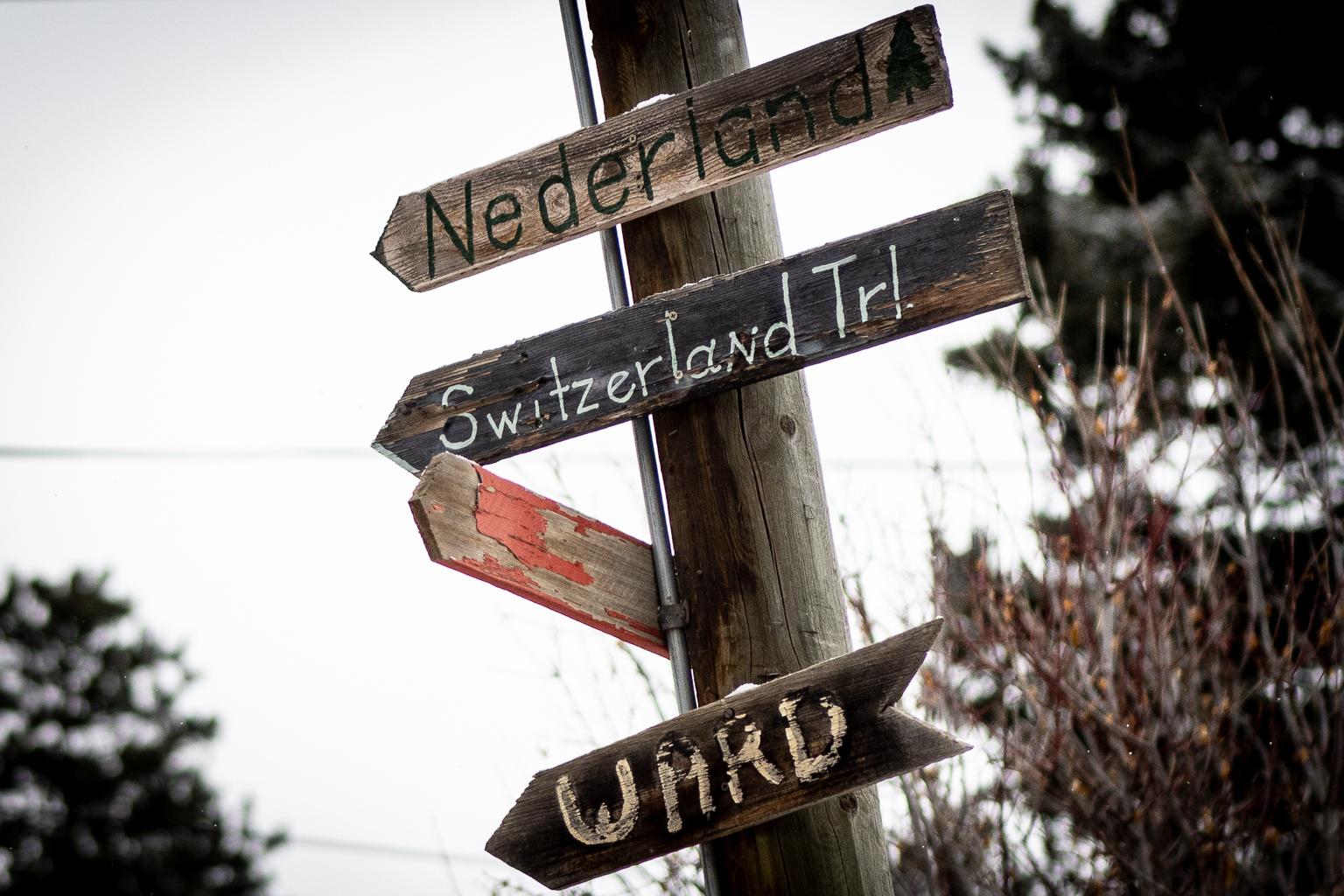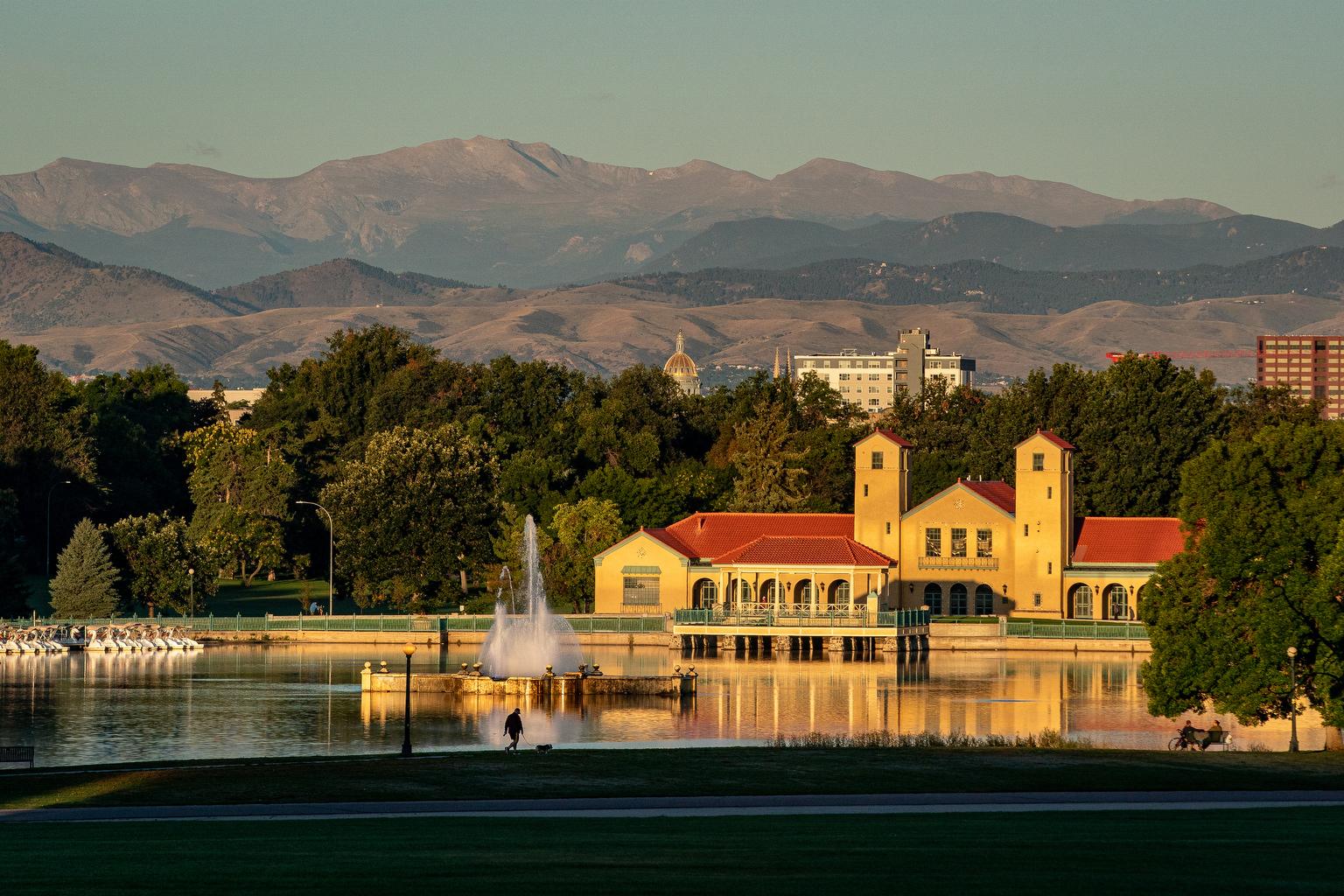
When vacationer William Moore of Elkhart, Ind., hiked Mount Evans this week, he knew to dress in warm clothes. He’d be spending close to 30 minutes driving with lights on along a narrow, winding road carved into the mountain, hugging the edge of a cliffside home to mountain goats that would drop into a forest of evergreens.
“It’s beautiful,” the 64-year-old operating room nurse said as the mist on Summit Lake about five miles from the peak, began to lift. “I saw a couple of marmots.” Visibility was a challenge on the way up, preventing him from seeing a family of mountain goats who took their time strolling around on the narrow roadway.
What he and his wife, together for some pre-planned hiking on a week’s long vacation, knew was that the mountain’s name is Mount Evans, and it is a premiere tourist attraction for hikers. What he didn’t know was that the mountain has been in the midst of a name change, and that the long-stalled resolution to the renaming could finally arrive as soon as this Friday, Sept. 15, when the U.S. Board of Geographic Names meets to consider a replacement.
The 14er in Clear Creek County, with the highest paved road in the U.S., was expected to have a new name by now, but an unexpected tribal request for a consultation in March slowed the process, which began in 2022.
Last November, after several meetings, the Colorado Geographic Naming Advisory Board voted unanimously to recommend that the mountain – a draw for sight-seers like Moore as well as Denver-area locals, be renamed Mount Blue Sky, getting rid of the moniker attached to John Evans, Colorado’s second territorial governor. Historians say Evans created the conditions that led to the Sand Creek Massacre that killed more than 200 Native Americans in 1864.
Once the state naming board voted, the next step was for Gov. Jared Polis to accede to the name change, which he did around the end of last year. As a last step, the U.S. board was to consider the change in March. That’s when things stalled.
In March, Northern Cheyenne tribal administrator William F. Walks Along, 64, of Lame Deer, Montana, objected to the name Mount Blue Sky. He contacted elected politicians and the Department of the Interior, and submitted a request for a formal consultation just before the board’s meeting began.
That set in motion a process in which tribal leaders met in June with a member of the Department of the Interior to discuss the renaming. Now that that’s complete, the board will meet virtually this Friday, when the process could finally conclude.
The name attached to the mountain looming at 14,265 feet over Metro Denver has long been controversial. John Evans served as Colorado territorial governor from 1862 to 1865. On November 29, 1864, the U.S. Army raided an encampment in Southeastern Colorado occupied by unsuspecting Cheyenne and Arapaho. An estimated 230 members of those nations, mostly women, children and elders, were killed. Evans, who may not have been aware of the potential for the massacre, is nonetheless believed by historians to have put events that ultimately led to the massacre in motion.
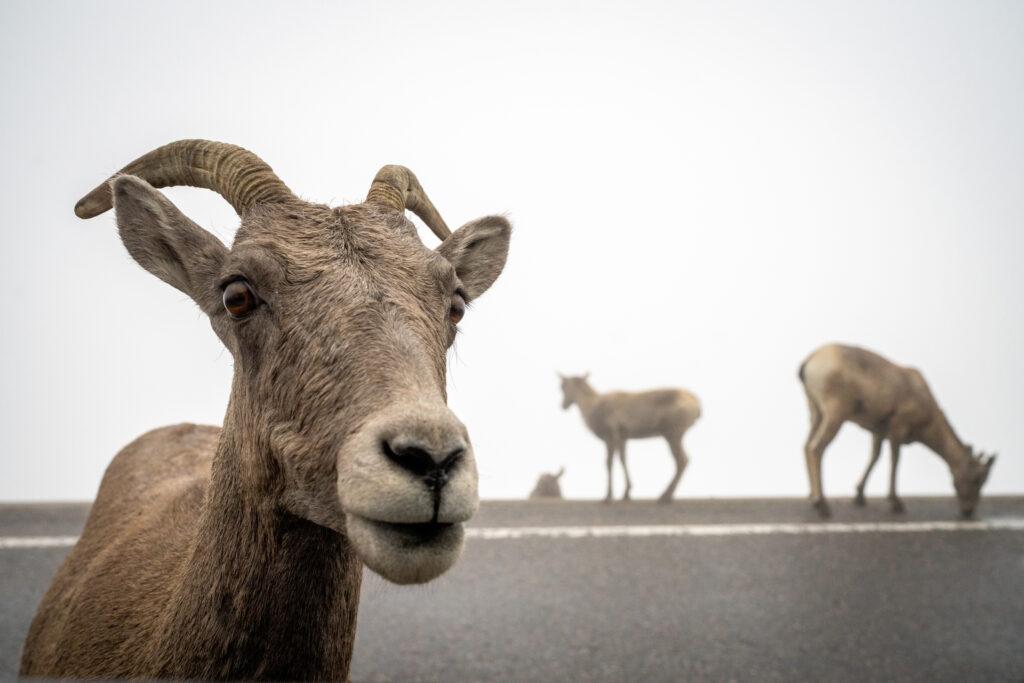
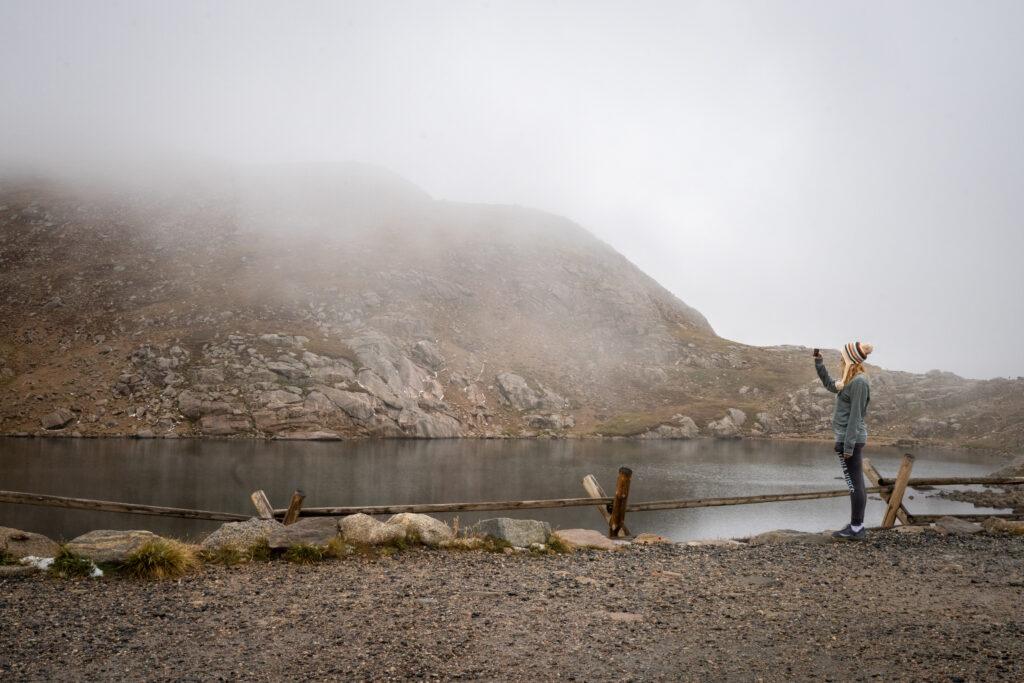
Evans' long and controversial history
Even if the name were to be changed on the mountain, it wouldn’t remove Evans’ name from other state and local landmarks. Weld County’s town of Evans has a population of about 22,000; Evans Avenue runs through Denver; and the RTD stop Evans station is a hub from which people get ferried around town.
The name also has a presence at the University of Denver, which in 2014 published a 109-page study about the massacre, stating: “Evans directly influenced the conditions in which virtually any and all military attacks on Indians could be launched and justified.”
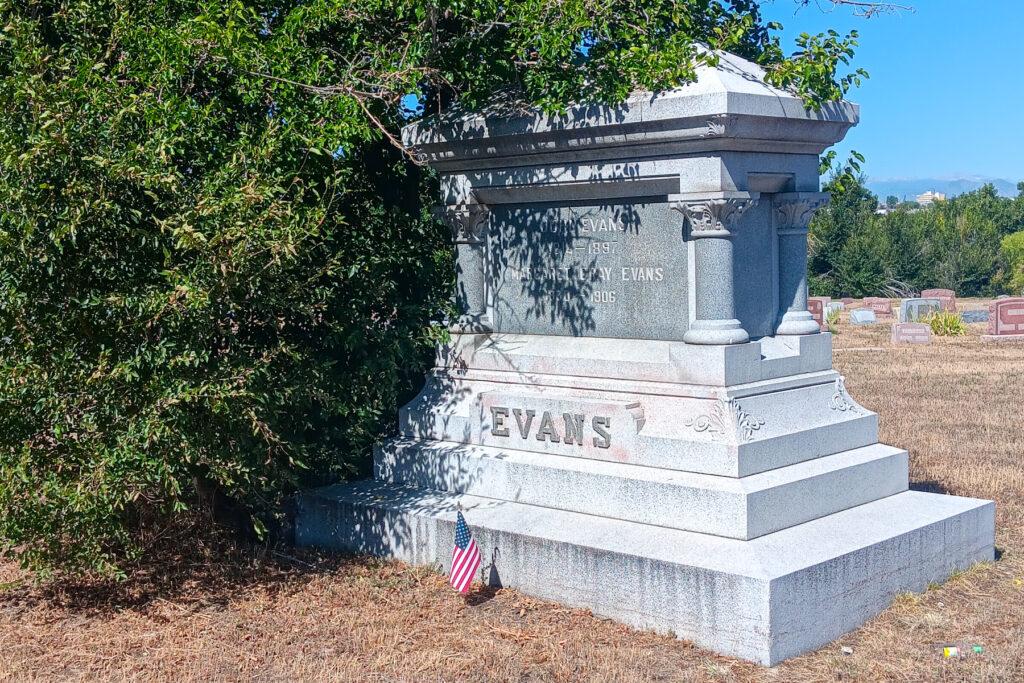
Yet DU’s 97-seat Evans Memorial Chapel, where people can hold weddings, bears the name as well; the building is marked as a landmark by the City and County of Denver’s Landmark Preservation Commission with no apparent mention of who he was. Evans founded the University of Denver in 1864.
Jon Stone, a spokesman for the university, did not directly answer whether a change in the chapel’s name was under consideration, but said the university remains in touch with the tribes, and that the chapel isn’t named for the former governor John Evans, but for his daughter, Josephine.
His remains are buried in Denver’s Riverside Cemetery along with those of his wife Mary. The cemetery booklet “Walk Through Historical Riverside Cemetery,” points out the location of his grave in block 13 – a gray granite memorial standing several feet above the ground. It mentions Evans, appointed by Abraham Lincoln as Colorado’s second territorial governor, helped found Colorado Seminary in 1863 – one year before the massacre, to which it makes no reference.
The cemetery looked tidy and spacious during a visit there this month, with neatly clipped yellowing grass. It’s easy to get lost as plot numbers are not sequential and the Brighton Blvd. grounds are massive, containing 67,000 burial spots. When asked if anyone regularly visited Evans’ grave, grounds supervisor Raul Martinez shrugged and said, “Not really.” A few regulars water grass around their loved ones’ resting place, but no one shows up to do that at Evans’ plot, he said.
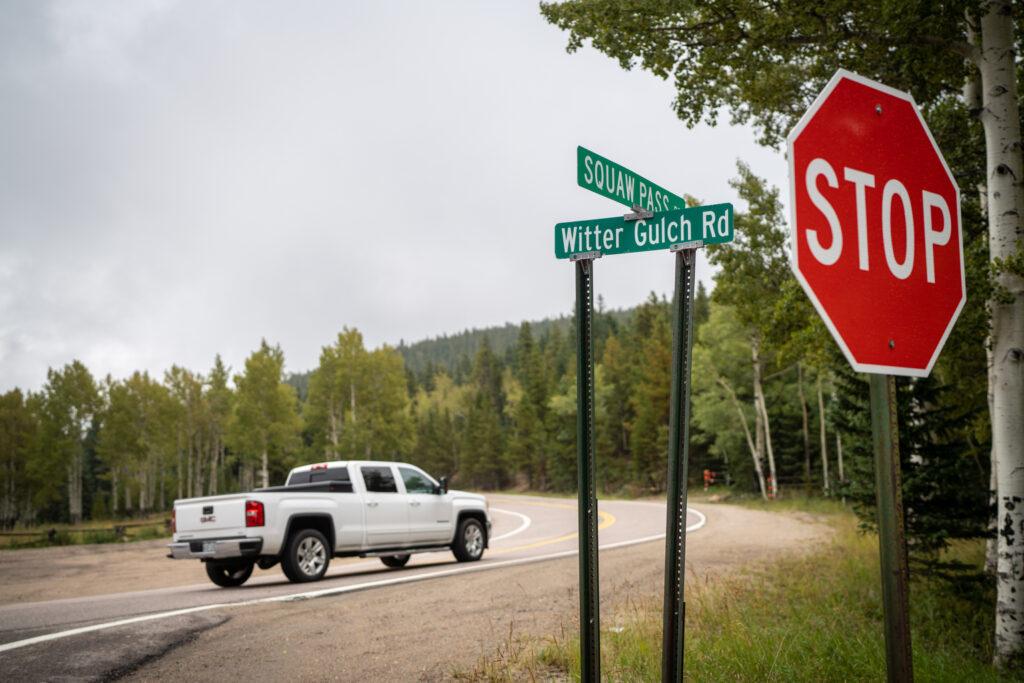
The agreement that wasn't
Although unable to address the use of the Evans name around the state, the Colorado Geographic Naming Advisory Board was established by Gov. Polis in 2020 to evaluate proposals for new names for state features, then make recommendations to the US Board of Geographic Names, authorized since 1890 to give final approval on geographic features like mountains.
The 15-member board includes state politicians, professors and other leaders. Mount Evans was on the board’s agenda a handful of times in 2022. Links to join the on-line meetings remotely, are posted on the site, so Coloradans can attend when features they care about are up for consideration; they can also submit suggested changes for names of features, and then make the case for their suggestion during the two-hour monthly meetings.
Between 50 and 70 people attended meetings on the topic of Mount Evans, including media and tribal elders. During one such meeting, attendees presented six proposed replacement names. Besides Mount Blue Sky, the other contenders were Mount Evans (proposed by someone who felt it should be named after an Evans descendant, not the territorial governor himself), Mount Soule, Mount Sisty, Mount Rosalie and Mount Cheyenne-Arapaho. The one with the most support was Mount Blue Sky, submitted by tribal elder of the Southern Arapaho tribe, Fred Mosqueda. At a later meeting, it received a unanimous favorable vote.
Mosqueda said after the vote that the name was a perfect choice, giving a nod to both of the tribes most affected by the massacre.
“It’s . . .the name of an annual springtime ceremony celebrated by the Southern Cheyenne during their sun dance,” he said the evening after the November meeting, adding: “Some tribes call Arapahoes ‘Blue Sky People,’ so that’s how it pertains to the Arapaho and the Cheyenne.”
Northern Cheyenne tribal member Otto Braided Hair, Jr. had submitted Mount Cheyenne-Arapaho, the only apparently plausible alternative to Mount Blue Sky, based on discussion during the meeting. When that name wasn’t selected, it seemed like the unanimously selected name – Mount Blue Sky – would be approved at the federal level without incident.
But just before the March federal meeting on whether to approve Mount Blue Sky, there was an obstacle: someone from the Northern Cheyenne tribe requested a Tribal Consultation Process, according to Jennifer Runyon, research staff For Susan Lyon, acting Executive Secretary for the U.S. Board on Geographic Names.
A Tribal Consultation Process is “a formal, two-way, government-to-government dialogue between official representatives of Tribes and Federal agencies to discuss Federal proposals before the Federal agency makes decisions on those proposals,” as written on the Bureau of Indian Affairs’ website. A consultation request can occur, according to the Department of the Interior Departmental Manual, if a tribe believes that an office is taking action that impacts it.
Walks Along identified himself in an interview as the person who submitted the request, saying he felt excluded from the Colorado renaming group’s monthly meetings, wasn’t abreast of their activities, and was opposed to the name they chose.
“I was never invited,” he said of the open-to-the public meetings. When asked why he or a Northern Cheyenne tribal designee didn’t use the link on the renaming board’s website to attend meetings and keep up with what was going on, he said that’s not how his tribe does things.
“Well, government-to-government means that you are formally invited,” he said. “There’s a formal record and we deal with designated tribal or government officials.” He said that tribal member Otto Braided Hair Jr., who had attended at least one meeting and suggested Mount Cheyenne-Arapaho, was not the head of the tribe, nor had he been delegated to handle the renaming matter for it, which Braided Hair, Jr. confirmed in a phone call.
Walks Along said the state’s process overlooked the tribe’s sovereignty, explaining that the tribe, a sovereign nation, dealt “government-to-government” with the federal government, not the state government. He added: “I support the Northern Cheyenne tribal council’s resolution favoring Mount Cheyenne-Arapaho, and I was entrusted to make sure we use advocacy and we’d rather have it named this.”
He said Mount Blue Sky is unacceptable because that term is used in sacred ceremonies held by the Northern Cheyenne. Finding out more about this proved difficult when Walks Along explained that he is “not allowed to talk about sacred ceremony with women … Our Northern people are very strict in following traditional protocols, and I’ve been told that for many years.”
He objected to the name by contacting U.S. Senators John Hickenlooper and Michael Bennet, who both represent Colorado; reaching out to U.S. Secretary of the Interior Deb Haaland, who also is Native American; and by initiating the consultation process. His request for the consultation process put into the mix Tanya Trujillo, who until recently served as the Assistant Secretary for Water and Science with the Department of the Interior.
On May 12, 2023, Trujillo sent a letter to Serena Wetherelt, President of the Northern Cheyenne Tribe of the Northern Cheyenne Indian Reservation; Cheyenne and Arapaho Tribes Governor Reggie Wassana in Concho, Oklahoma; Northern Arapaho Tribe of the Wind River Reservation Chairman Lloyd Goggles in Ethete, Wyoming; Southern Ute Indian Tribe of the Southern Ute Reservation Chairman Melvin Baker in Ignacio, Colorado; and Ute Mountain Ute Tribe Chairman Manuel Heart in Towaoc, Colorado.
In the letter, she invited the five tribal leaders to a consultation to discuss the proposed name change, explaining that the U.S. Board of Geographic Names operated “conjointly” with the Department of the Interior. “Secretary Haaland and I desire that all interested federally recognized Tribes be afforded this opportunity to share their respective points of view in this matter.”
Walks Along drove from Wyoming to Lakewood for the two-hour June 14 consultation. Without sharing details, he said he left understanding that those voting would remain neutral and open-minded.
At this point, it appears likely that the six names originally proposed are all up for consideration. It’s unclear whether Mount Blue Sky is still best-positioned due to the state’s unanimous vote for it, or now worse-positioned because of the tribal consultation.
Those questions about the name of the mountain, with its twisty paved roads, mountain goats, visitors from as close as Denver and as far as Elk Hart, Indiana, will most likely be clarified soon. The U.S. Board of Geographic Names meeting is set for Friday, six months after initially planned.
The meeting is open to the public, and those wanting to attend can request an invite by sending an email to [email protected]; a link to join the meeting remotely will be sent out shortly thereafter.


